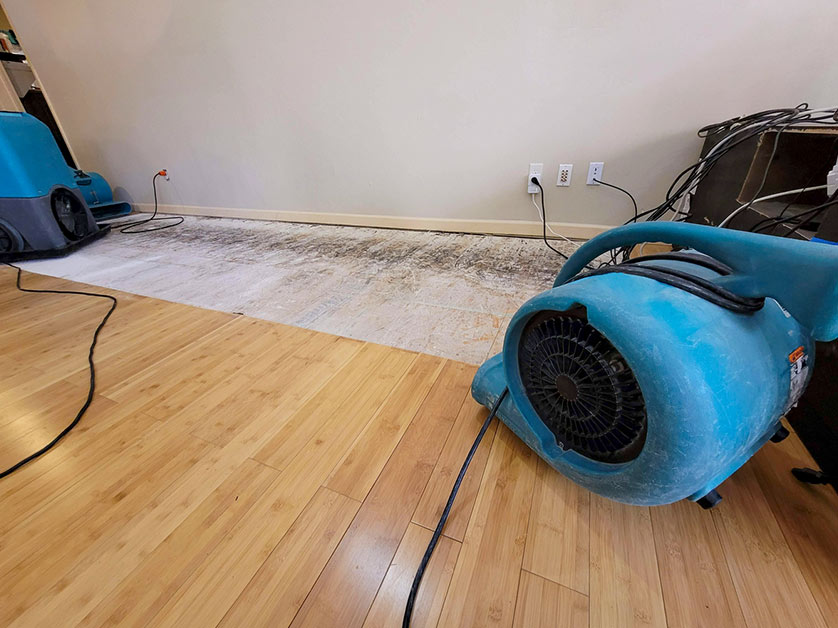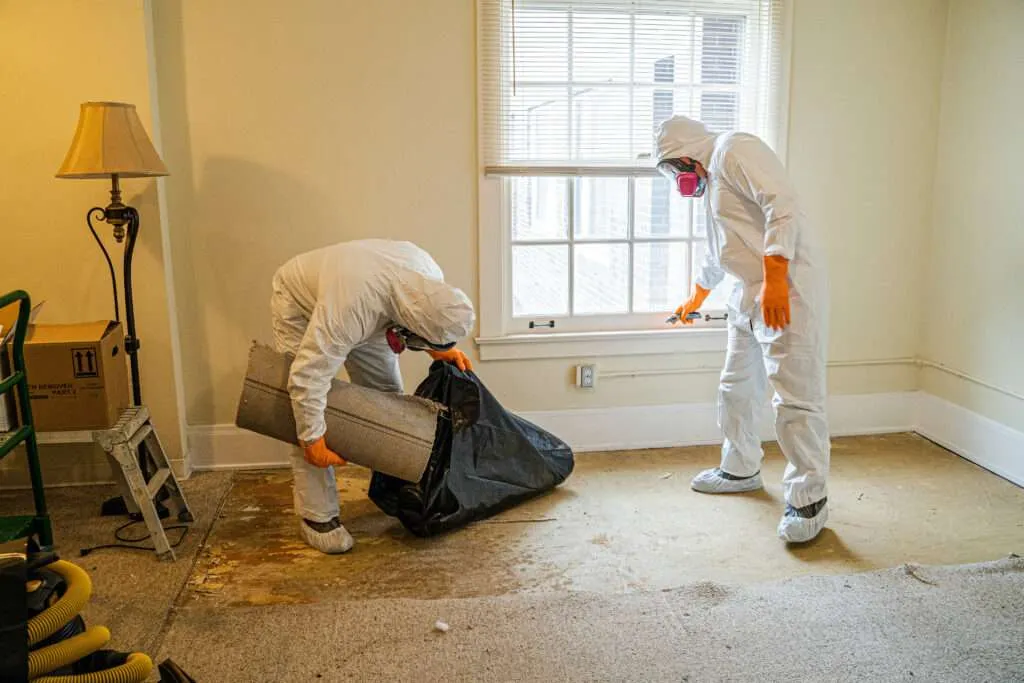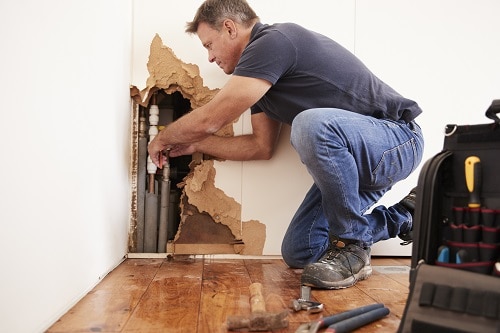What happens when you schedule Flood Cleanup Services
Wiki Article
Water Damage Restoration 101: Understanding the Process and Price
Water damage can strike all of a sudden, leaving homeowners in a state of confusion. Understanding the repair procedure is crucial for reliable recuperation. From reviewing the damage to picking the ideal solution supplier, each action influences the general end result and price. Factors such as the kind of water damage and necessity also play a substantial role. What are the specific techniques used in restoration, and how can one plan for possible expenditures?Kinds of Water Damage
Water damage can arise from numerous resources, each providing distinct challenges for restoration. The 3 main kinds of water damage are classified based on contamination levels: tidy water, grey water, and black water. Tidy water stems from resources like damaged pipes or rain, presenting marginal health and wellness dangers. Gray water, that includes wastewater from sinks or cleaning equipments, has pollutants that may create pain or ailment if consumed. Black water, the most unsafe category, originates from sewer or floodwaters, including hazardous microorganisms and microorganisms. Each type requires specific reconstruction methods and security measures to effectively minimize and attend to the damage health risks. Recognizing these distinctions is important for property owners and specialists involved in the water damage repair process.Preliminary Assessment and Inspection
A complete preliminary assessment and evaluation are crucial action in the water damage repair procedure. This phase begins with an expert examining the degree of the damage, recognizing the resource of the water breach, and establishing the kind of water involved - Water Damage Restoration. Service technicians use customized tools to gauge dampness degrees in numerous products, such as wall surfaces, floorings, and furnishings. Furthermore, they examine architectural stability and prospective health risks, including mold and mildew development. The searchings for from this assessment notify the repair plan, guiding necessary activities and source allotment. Exact documents of the damage is essential for insurance policy cases and future recommendation. In general, this initial analysis prepares for efficient remediation, making certain a comprehensive reaction to the particular situation at hand

Water Removal Methods
Following the initial assessment, efficient water removal methods are utilized to mitigate damage and protect against more issues. These methods involve the usage of specific equipment such as industrial-grade vacuum cleaners and submersible pumps. The selection of technique relies on the volume of water present and the sort of materials impacted. For standing water, submersible pumps are generally utilized for fast removal, while vacuum cleaners are suitable for extracting water from carpetings and furniture. Additionally, progressed methods like water removal mats might be utilized for hard-to-reach locations. The objective is to get rid of as much water as possible, minimizing the capacity for mold and mildew growth and structural damage. Motivate and efficient water extraction is crucial in the general water damage reconstruction procedure.Drying Out and Dehumidification Process
When the water removal is total, the drying out and dehumidification process comes to be vital to restoring the affected location. This stage usually uses industrial-grade dehumidifiers and air moving companies to efficiently minimize dampness degrees. The dehumidifiers attract damp air, eliminating excess moisture, while air movers circulate air to speed up dissipation. Surveillance tools is often utilized to track moisture and temperature level degrees, making sure excellent drying conditions. The duration of this procedure can differ relying on the extent of the water damage and environmental aspects. It is important to completely completely dry all impacted products, including walls, flooring, and furnishings, to avoid mold growth and structural damage. Appropriate implementation of this action is vital for an effective reconstruction end result.Cleansing and Disinfecting Damaged Locations

Initial Analysis and Examination
Before beginning any type of repair efforts, a complete initial assessment and examination of the influenced areas are vital for reliable cleaning and disinfecting. This procedure involves recognizing the degree of water damage, identifying the resource of the water intrusion, and reviewing the materials impacted. Assessors generally seek signs of mold development, architectural integrity problems, and harmed items. The assessment likewise consists of checking wetness degrees making use of specialized equipment to ensure no surprise water pockets continue to be, as these can result in more problems. Recording the searchings for is vital for planning the following actions in the reconstruction process. A comprehensive preliminary analysis makes it possible for restoration professionals to create a targeted approach for efficient cleansing and sanitizing, eventually lessening damage and health and wellness threats.Cleansing Strategies and Products
Reliable cleansing and disinfecting of water-damaged locations need a range of methods and items tailored to the certain products impacted. For porous surfaces like drywall and carpets, removal techniques are vital to remove excess wetness, complied with by deep cleansing with specialized cleaning agents. Non-porous products such as floor tile or metal can be cleaned using commercial-grade cleaners that successfully get rid of contaminants. Vapor cleansing is one more efficient technique, particularly for carpetings and furniture, as it utilizes heats to remove microorganisms and mold and mildew. Additionally, environmentally friendly products are increasingly preferred for their safety and security and effectiveness. Ultimately, picking the proper cleaning approaches and products not only assures instant cleanliness yet likewise aids in avoiding more damage and carcinogen connected with water invasion.Sanitization and Disinfection Approaches
When addressing water damage, correct sanitization and sanitation approaches are necessary to guarantee the safety and security and health and wellness of the damaged atmosphere. After first cleaning, surface areas should be treated with ideal anti-bacterials to get rid of virus, mold, and microorganisms that flourish in wet conditions. Typical approaches include the usage of EPA-approved chemical anti-bacterials, which can be applied with splashing or wiping methods. In addition, ultraviolet (UV) light systems can efficiently disinfect locations by neutralizing bacteria without rough chemicals. The choice of technique frequently relies on the kind of materials affected and the degree of contamination. Ultimately, thorough sanitization not only restores a secure space yet likewise aids avoid future health and wellness threats connected with sticking around moisture and mold growth.
Repair Work and Restoration Options

Aspects Affecting Restoration Prices
The extent of water damage straight influences the remediation sets you back homeowners can anticipate to sustain. Factors such as the resource of the water, the period of exposure, and the affected products substantially influence pricing. Tidy water damage from a broken pipe is normally less costly to bring back contrasted to damage created by sewer (Flood Cleanup Services). Furthermore, the degree of contamination determines the demand for specialized cleansing and disposal solutions, further enhancing costs. Geographical area likewise plays a role, as local labor prices and availability of restoration services can differ. The necessity of the action influences expenses; quicker treatments normally lead to reduce general costs by avoiding additional damage. Recognizing these aspects is crucial for house owners when approximating remediation costsThe three key kinds of water damage are classified based on contamination degrees: tidy water, gray water, and black water. A complete initial evaluation and examination are important actions in the water damage repair process. For standing water, completely submersible pumps are commonly used for fast removal, while vacuum cleaners are optimal for extracting water from carpetings and furniture. The extent of water damage straight affects the restoration costs home owners can anticipate to sustain. Tidy water damage from a busted pipe is typically much less expensive to restore contrasted to damage caused by sewer.
Report this wiki page